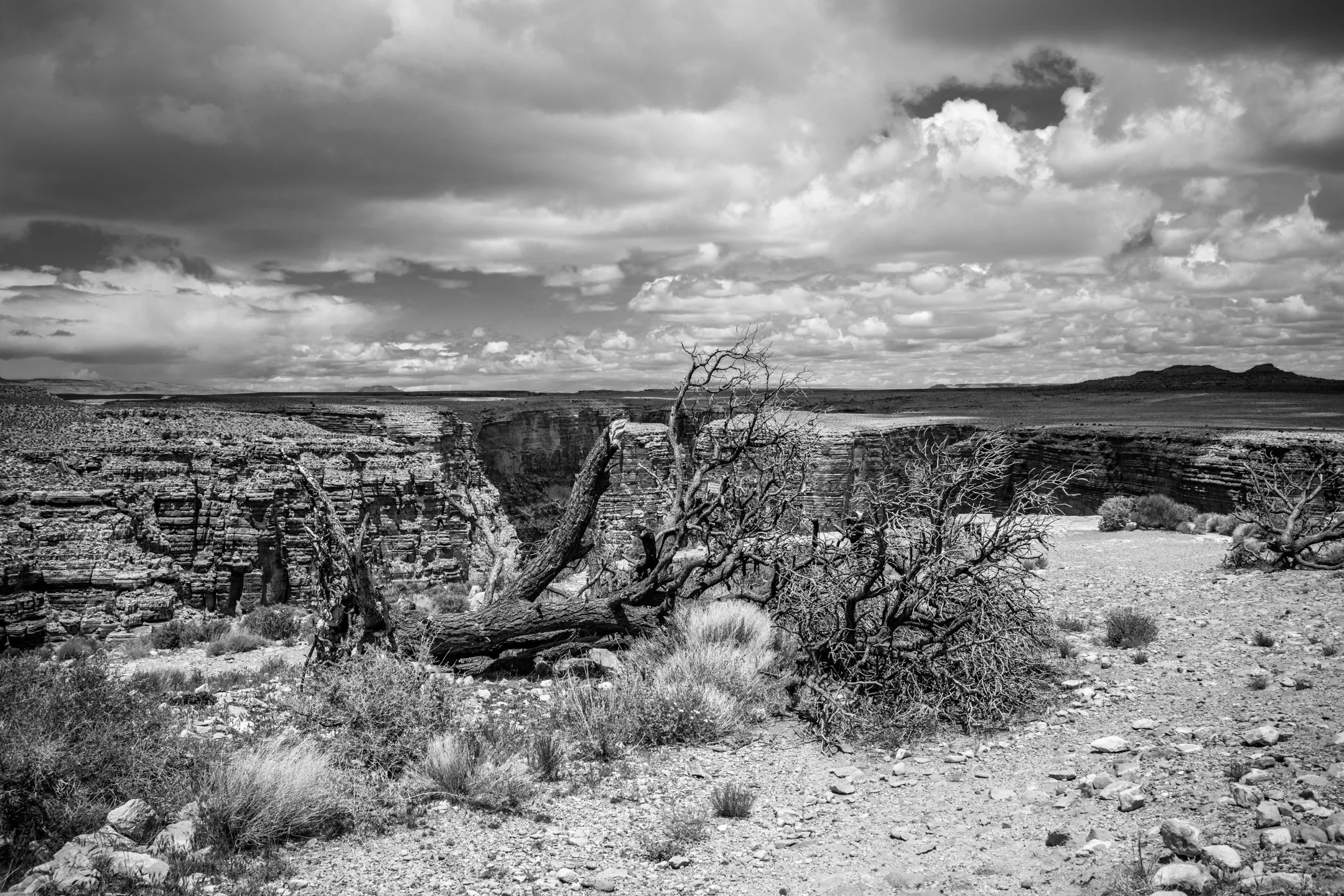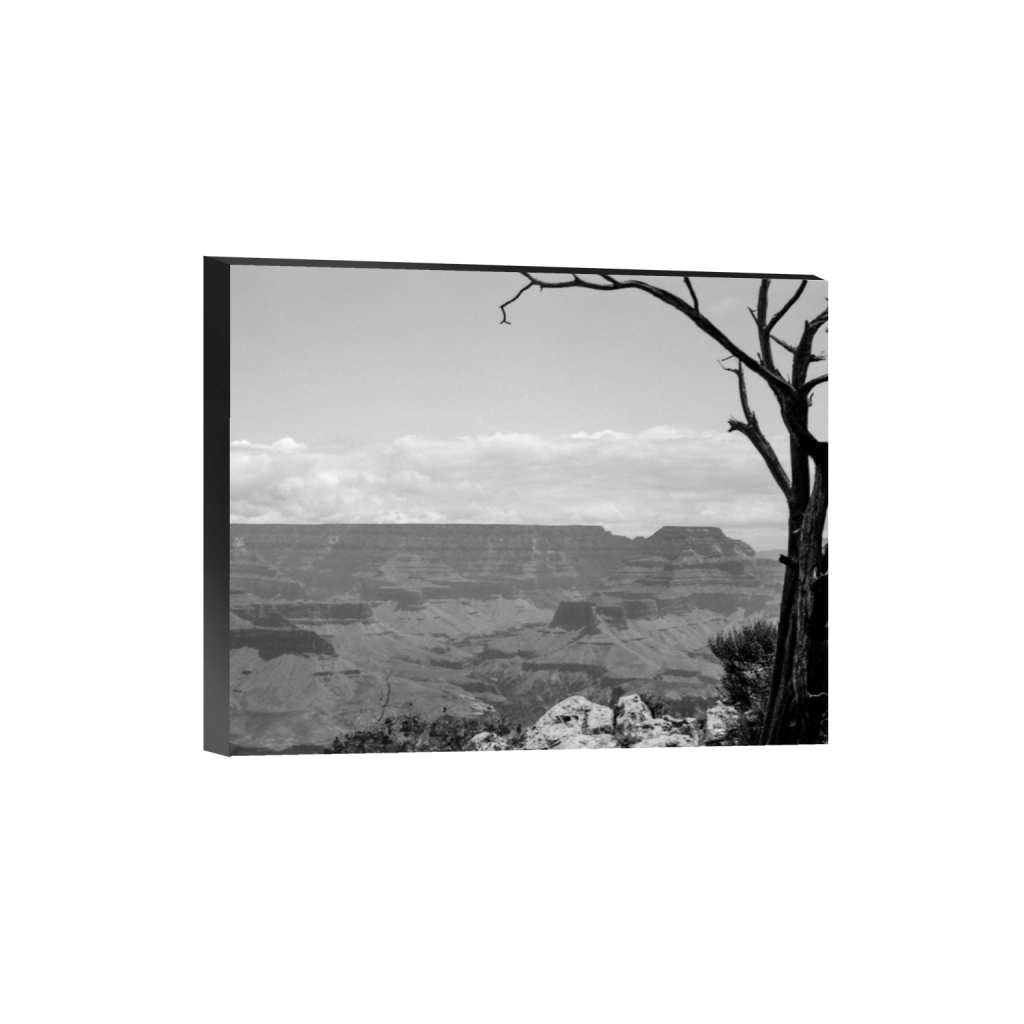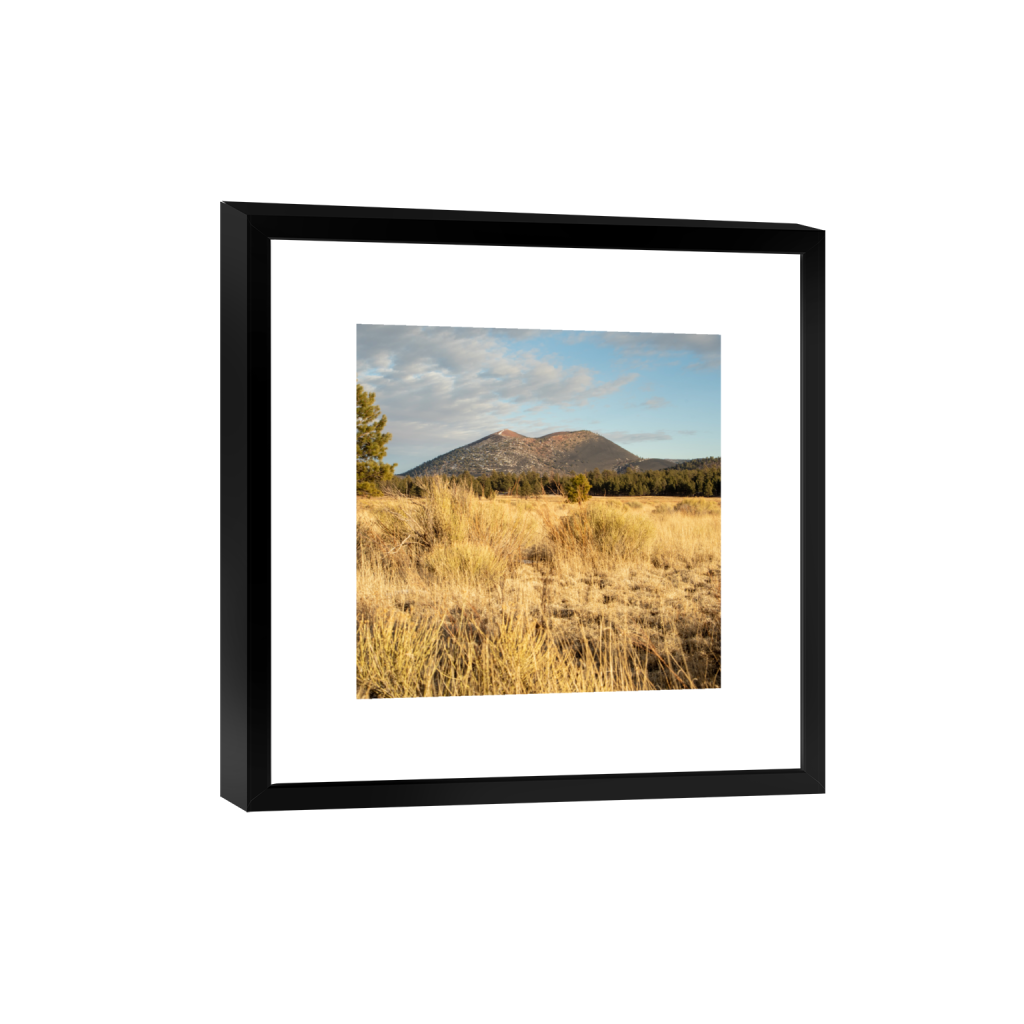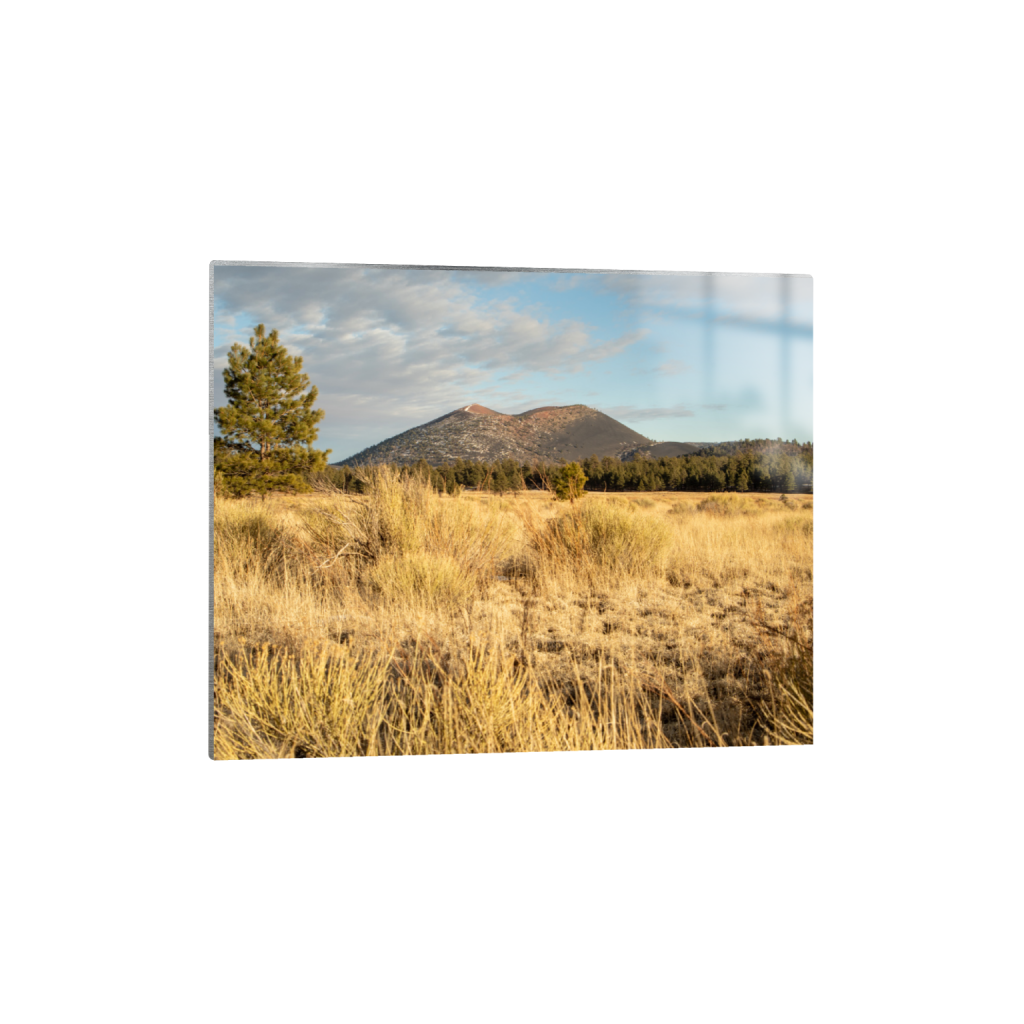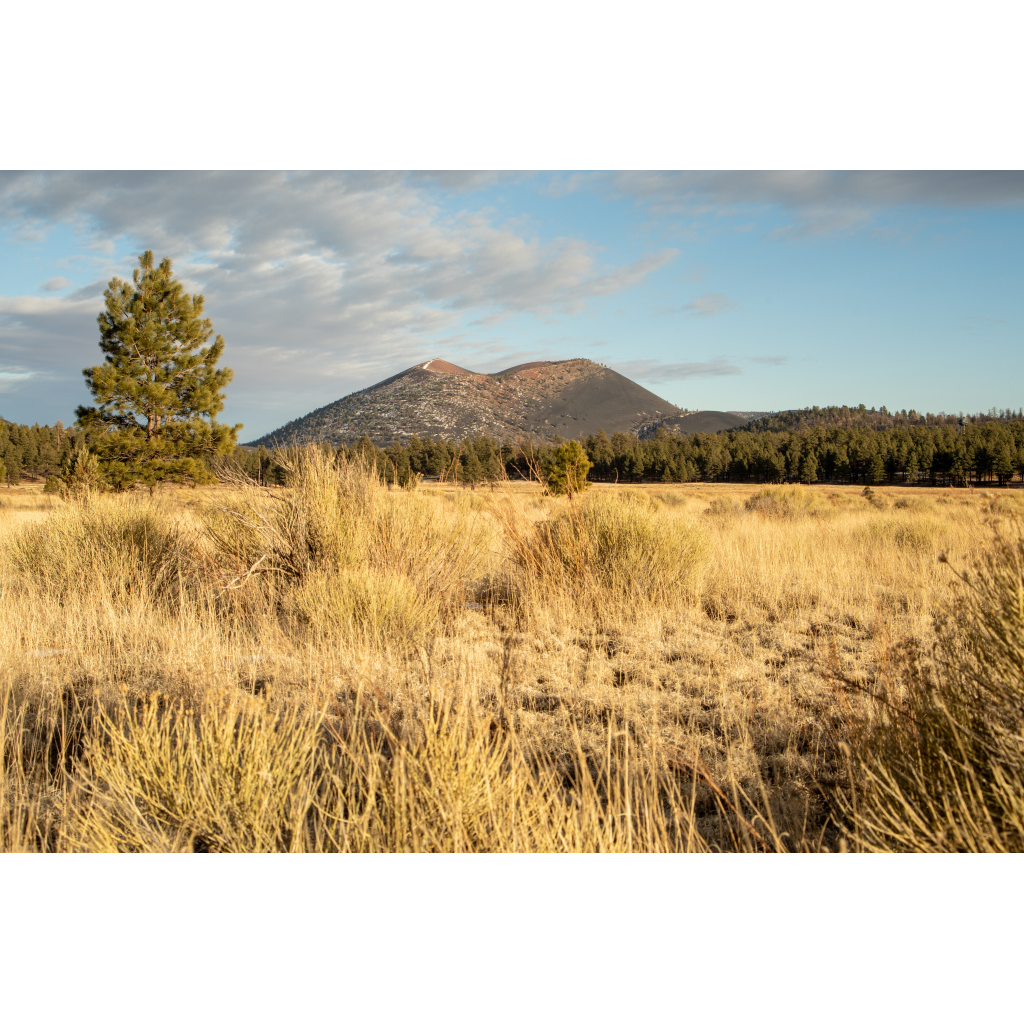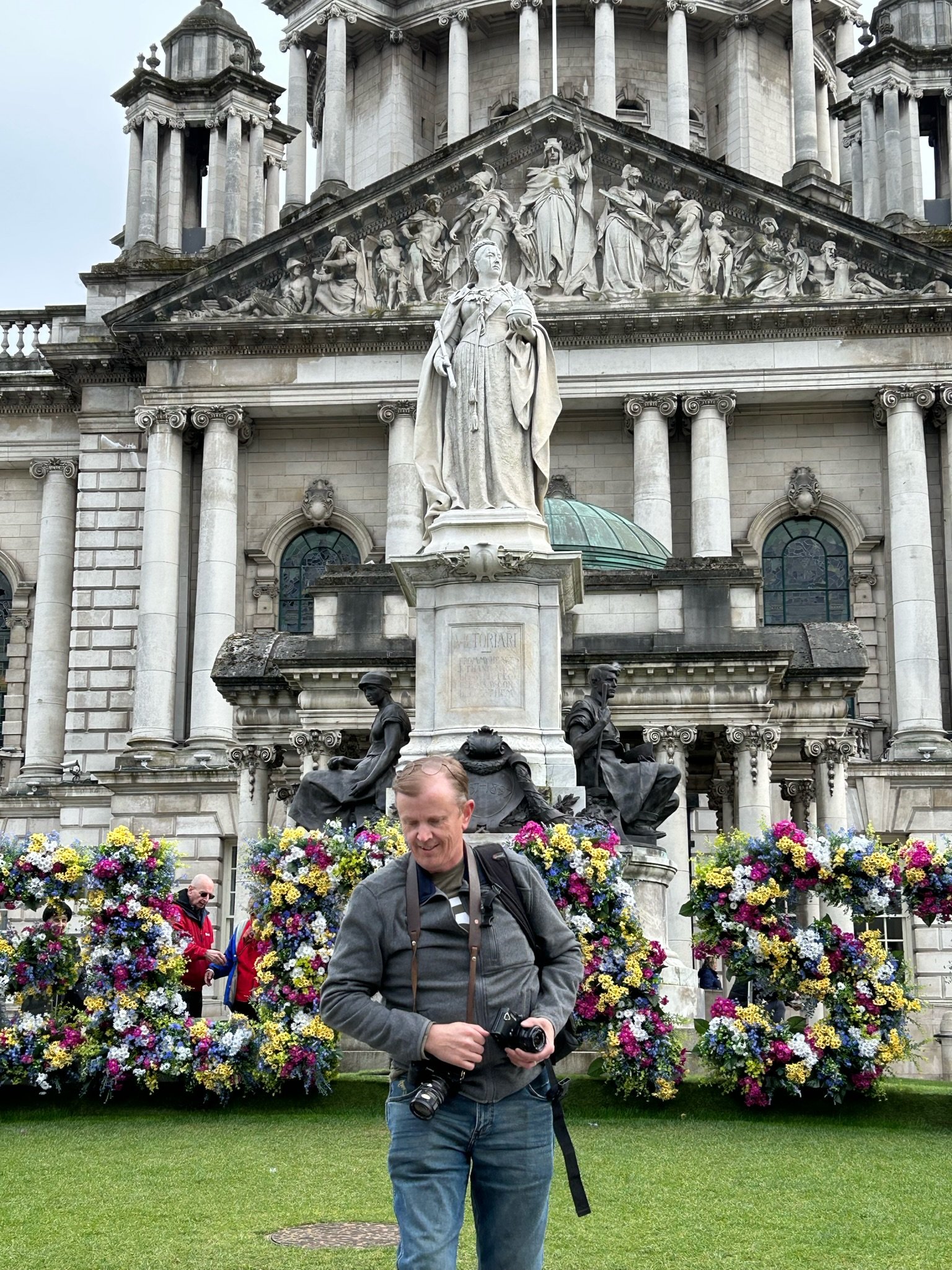Embracing the Blur
If you've stumbled upon this little corner of the internet, thank you for being here. I'm just a guy who's spent most of his life chasing light through a lens, and lately, that light has started to fade in ways I never quite imagined. This post isn't meant to be a pity party or a grand manifesto, I’m no expert on resilience, just someone muddling through with a heart full of gratitude and a camera bag that's gotten a bit lighter over the months. But writing has always been a quiet companion to my photography, a way to make sense of the frames I capture (or, these days, the ones I remember). So, with a deep breath and a humble nod to God, here's where my story sits right now.
It started with a simple video. Yesterday, I hit record on my phone for Instagram, a raw, rambling clip from the heart about the sting of going blind and what that means for the photographs I've loved making. I poured out the ache of knowing I can't nail those perfect compositions or exposures anymore, the kind that come from years of squinting at a scene with my one good eye and just knowing. Film has its own personality, doesn't it? Fomapan with its moody shadows and tight latitude, Kentmere offering a bit more forgiveness in the highlights. Details like that live in my head, etched from decades of trial and error. But my eyes? They've decided to bow out early. Five doctors, the state of Arizona, and the U.S. government all agree: I'm beyond legally blind, teetering on the edge of total darkness. I wake up each morning bracing for the day it all goes black.
About two months back, the warning signs ramped up. Closing my eyes brought flashes of random colors and lights, like a faulty projector spinning out of control. That sliver of vision I had left, five degrees on a good day, turned blurry, turning the world into soft-edged blobs. I laughed it off in an article I wrote, calling everyone a "blob" because, well, humor's been my shield against the heavy stuff. But reality doesn't stay polite for long.
One afternoon, I picked up one of my trusty SLR film cameras, the kind that's felt like an extension of my hand for years. I tried to focus. Couldn't. The viewfinder swam into nonsense. Composition? Forget it. That narrow tunnel of sight wasn't enough to frame a thought.
I found myself on a park bench that day, head in hands, grieving for what felt like hours. Self-pity wrapped around me like fog, thick and unyielding. It was the first time I'd let the full weight of it crash down. I haven't lifted a camera to shoot since, not one single frame. In the haze of those weeks, I started selling off pieces of my collection, each transaction a quiet goodbye to the tools that shaped my world. All that's left now are my beloved folding cameras, with their tactile folds and whispers of history, and two SLRs I just can't part with. They're like old friends I can't bear to lose, even if they sit gathering dust.
Looking back, I've been dancing with this shadow for longer than I care to admit. As a kid, doctors warned I'd lose my sight in adolescence. It didn't happen, praise God for that grace, and maybe that's why I've poured everything into photography. Forty years as a hobbyist, twenty of that as a professional. Every click was a prayer, a moment stolen from time.
Through breakups and breakthroughs, lean years and laughter, that passion kept me steady. It wasn't about fame or perfection; it was joy, pure and simple. Losing it? It's like misplacing a limb. For months, I've wandered aimlessly, future a foggy outline. But I'm not alone in the drift, Jesus has been my anchor, my wife my soft place to land, and our three goofy pups? They're the daily reminder that wagging tails don't need perfect vision.
Yesterday morning, something shifted. I woke with a spark, not a wildfire, just a gentle glow. Determination, I suppose you'd call it. I dug into a folder of unreleased shots from a May trip, landscapes that still make my heart hum even if I can't see them sharply anymore. I posted a few, tentative steps back into sharing. I didn't head out to shoot, but the thought lingered, whispering maybe. The truth is, I hold myself to impossible standards, flawless light, impeccable lines that I wouldn't dream of expecting from anyone else. It's a humble brag wrapped in humility: I've been blessed with skill, but pride can be a sneaky thief. How do I create without chasing ghosts of what was?
This road to blindness? I wouldn't wish it on my worst enemy. It's lonely, riddled with "what ifs" that echo in the quiet hours. But here's the quiet miracle: it led me to the blind center in Phoenix. Walking through those doors flipped the script. Suddenly, it wasn't the end of my story but a pivot to a new chapter. I've met folks who get it, the raw grief, the stubborn spark. Some love photography as fiercely as I do, swapping tips on adaptive gear like it's the most natural conversation. Together, we've started an advocacy group here in Arizona, a loose band of encouragers lifting each other up. No heroes among us, just people saying, "Hey, you've got this, one step at a time.”
Life's gone tactile now, and there's a strange beauty in that. Braille bumps under my fingers, keyboard clicks like Morse code for my thoughts. Cameras with dials and buttons? They're gold, things I can map in my mind, muscle memory overriding the dark. Tomorrow, I'm pulling out my Minolta Maxxum, that autofocus wonder with its forgiving heart. I'll give it a go, no pressure, just curiosity.
Scanning the negatives afterward will be a puzzle, details lost to me, but that's the thrill, isn't it? An adventure in trust, handing the reveal over to the machine and whatever magic it uncovers. I love this part, if I'm honest, the relearning. Figuring out angles by sound and feel, composing by instinct honed over lifetimes. Lights? Who needs 'em? I navigate just fine in the pitch black, a skill that's equal parts survival and secret superpower. It's all a gift, wrapped in loss, reminding me that sight was never the whole picture.
If you're reading this and facing your own storm—big or small—know this: it's okay to sit on that bench for a while. But don't stay there forever. Reach for the hand extended, whether it's a friend's, a stranger's at a support group, or the steady one from above. I'm still figuring it out, one humble frame at a time. Life? It's good. Messy, blurred at the edges, but profoundly good.
Thanks for letting me share. Drop a note if this resonates. I’m all ears (and heart). Until next time, keep chasing what lights you up, however dim the path.
With kind regards,
Jefferson Davis,
The Blind Photographer
Barren Expanse
The photograph captures the awe-inspiring expanse of the Grand Canyon, a natural wonder that has captivated millions. Taken in striking black and white with a Voigtlander Vito IIa on Kentmere100, the photograph emphasizes the dramatic contrasts and textures of the canyon’s layered rock formations. The absence of color draws attention to the intricate details of the canyon walls, revealing the subtle variations in the rock layers that tell a story of ancient geological processes.
The photograph captures the awe-inspiring expanse of the Grand Canyon, a natural wonder that has captivated millions. Taken in striking black and white with a Voigtlander Vito IIa on Kentmere100, the photograph emphasizes the dramatic contrasts and textures of the canyon’s layered rock formations. The absence of color draws attention to the intricate details of the canyon walls, revealing the subtle variations in the rock layers that tell a story of ancient geological processes.
In the foreground, a barren tree with twisted, leafless branches frames the scene, adding a touch of stark elegance and a hint of the harsh desert environment that defines this region. The tree's silhouette against the vast canyon and the cloudy sky creates a poignant contrast, symbolizing both resilience and the passage of time. The clouds themselves add depth to the image, casting soft shadows over the rugged terrain and enhancing the sense of scale and majesty that the Grand Canyon embodies.
Situated in Arizona, United States, the Grand Canyon stands as one of the most renowned and iconic landscapes globally. With a length spanning approximately 277 miles, a width reaching up to 18 miles, and a depth exceeding a mile, this natural marvel was sculpted by the Colorado River over an estimated six million years. Notably, the canyon’s rocks possess a geological history dating back nearly two billion years, providing a profound glimpse into Earth’s ancient past. The canyon’s vibrant layers, ranging from the dark Vishnu Schist at its base to the lighter Kaibab Limestone at its rim, collectively constitute a comprehensive record of ancient oceans, deserts, and tectonic upheavals.
The Grand Canyon is not only a visual spectacle but also a place of cultural and ecological importance. It has been home to Native American tribes, including the Havasupai and Hopi, for thousands of years, and their histories are woven into the land. Today, it is protected as a national park, attracting millions of visitors who come to hike, raft, or simply gaze in wonder at its grandeur. The canyon's diverse ecosystems support a variety of wildlife, from bighorn sheep to the elusive California condor, adding to its rich tapestry of life.
This image serves as a powerful reminder of nature's ability to shape the world over eons, offering a moment of reflection on our place within such vastness. Whether viewed as a geological masterpiece or a spiritual haven, the Grand Canyon continues to inspire and humble all who encounter it. I know that I was humbled by its beauty and grandeur.
If you like these articles about photographs and their subjects, leave a comment.
Episode 2 - Blind Photographer
In this episode of Blind Photography, I discuss the intersection between going blind and having a fervent love for photography. As my eyesight dwindles into emptiness, like on old cathode ray tube tv being turned off for the last time.
I also discuss photographing the Grand Canyon and Bryce Canyon on a recent camping trip. And, of course, I talk about the cameras I used on the trip and the lessons I learned along with way. The Vito IIa has become a tool I use to capture the world, not as I see it but as I hope it to look like.
In this episode of Blind Photography, I take some time to discuss what has been happening in our lives here in the stunningly beautiful and vast state of Arizona. I delve deeply into the experience of becoming legally blind and the myriad aftereffects that accompany such a significant life change. The support I have received from my family, friends, and strangers has truly surpassed anything that society itself has offered in terms of assistance and understanding. The fact that I am now legally blind is something that cannot be understated—it has reshaped my entire world. My cane, much like my phone, has become an essential tool that accompanies me everywhere I go, helping me navigate this new chapter in my life.
I want to pose a thought-provoking question to you, my audience: If your family and/or loved ones had to choose three meaningful things to place in a box that truly represent who you are, what do you think they would select?
After catching up on the realities of being blind, I transitioned into an exciting discussion about cameras, film, photography, and our little vacation to the breathtaking Grand Canyon, as well as our visit to the stunning Bryce Canyon in Utah. Of course, I took along the Zeiss Ikon Super Ikonta with me; that camera chewed through medium format film faster than I could load it! I also brought my Proud Chrome Six, which I will be reviewing soon, and my beloved Voigtlander Vito IIa, an essential tool that has become nearly indispensable for this blind photographer.
I may not need to see the exposure settings, but I can feel the reassuring clicks and know precisely where the shutter speed and aperture settings are. I set it to infinity for most of my work, cock the shutter, and press the button. While it may not boast the best lens in the world, it is indeed fantastic for its time and does a remarkable job for a four-element lens.
In next week's episode, my lovely wife, Deana, will be joining me to answer some funny questions about what life is like with a blind man, or rather, her blind husband. It promises to be a wonderfully entertaining episode. If you have not subscribed to our channel already, I encourage you to do so! We have some incredibly exciting news coming your way soon that you won't want to miss.
Sunset Crater Volcano
Photographing Sunset Crater Volcano is like capturing the vivid palette of a master artist at work. As the sun dips below the horizon, the cinder cone transforms into a canvas of deep oranges and purples, with shadows dancing across the rugged terrain and a dusting of snow. The contrasting textures of the black volcanic rock against the overcast sky creates a stunning visual symphony, challenging the limits of perception and inviting a playful exploration of line and form. Each click of the shutter is an exhilarating reminder that beauty can thrive in the starkest of landscapes, leaving us to ponder the wonders of nature, even when sight becomes a fleeting memory.
On Sunday, Deana and I eagerly headed up to the charming town of Flagstaff to do some shopping for her. Flagstaff is truly an amazing place that we both thoroughly enjoy exploring together. There is so much to see and do around Flagstaff, from quaint shops to scenic views. After our adventurous shopping excursions, we decided to venture over to the Majestic Sunset Crater Volcano, a stunning location where life continues to spring up vibrantly amongst the rugged cinders of a volcanic eruption that occurred way back in 1085 A.D. According to Wikipedia:
The date of the eruptions that formed the 340-meter-high cone (1,120 ft) was initially derived from tree-ring dates, suggesting the eruption began between the growing seasons of AD 1064–1065.[7] However, more recent geologic and archaeological evidence places the eruption around AD 1085.[8] The largest vent of the eruption, Sunset Crater itself, was the source of the Bonito and Kana-a lava flows that extended about 2.5 kilometers (1.6 mi) northwest and 9.6 kilometers (6 mi) northeast, respectively. Additional vents along a 10-kilometer-long fissure (6.2 mi) extending southeast produced small spatter ramparts and a 6.4-kilometer-long lava flow (4 mi) to the east. The Sunset Crater eruption peaked at VEI 4 (Sub-Plinian), produced a total 0.52 km3 of ejecta,[9] had an eruption column between 20-30km tall[10] and produced a blanket of ash and lapilli covering an area of more than 2,100 square kilometers (810 sq mi), which forced the temporary abandonment of settlements of the local Sinagua people.
As we approached the volcano, my jaw dropped. The view from the open fields in front of the park were picturesque. There was a light dusting of snow atop the crater. We had hoped for more snow, but it was still breathtaking. I got out my now trust Sony A7Cii and Soligor 35*70mm f2.5 lens and went to work. Deana yelled at me at one point, because I had disappeared in the golden grasses. I get very excited about taking photographs, like a sniper crawling around on the ground, looking for the right vantage point. But, I am looking for just the right perspective and composition.
We continued on into the expansive park, fully embracing the captivating pastoral scenes as well as the more somber, charred remnants of burned trees and winding lava flows that told a story of their own. I found myself contemplating what it must have been like when this mighty volcano erupted in its fiery glory. The sunset, while somewhat mediocre at best, did not dampen our spirits; we made the most of it and joyfully headed home after a few hours of wandering amongst the rugged cinders and ancient lava flows. I could not recommend this enchanting place enough. There is truly so much to do in this vibrant area and an abundance of incredible sights to behold, each more mesmerizing than the last.
Life Amongst the Bricks
Photography captures more than just mere images; it beautifully encapsulates moments of raw emotion and profound experience, unveiling intricate stories through the magical interplay of light, shadow, and time. The very act of clicking the shutter is an affirmation of the photographer’s intent, a definitive selection of a single, fleeting frame from the boundless flow of life that surrounds us. This simple yet striking photograph of vibrant flowers bravely emerging from dull bricks is, without a doubt, my favorite capture of the year 2024.
Consider the potent significance of that solitary click—the pivotal heartbeat wherein the photographer and the captured moment converge in a silent conversation. “This one photo speaks volumes,” the artist muses; it’s an acknowledgment that the photo holds an essence that transcends the visual, striking a chord that resonates with the viewer’s innermost sentiments.
In this silent exchange between the observer and the observed, the photograph becomes a linguistic artifact. Its voice may whisper or shout, but the volume it speaks with is not one measured in decibels, but in affect..
As the image is revealed, developed, and shared, it begins a journey of interpretation and inspiration. Each viewer, drawn into the frame, becomes part of the unfolding narrative, extending the heartbeat of the captured moment to echo endlessly through the halls of human experience.
As I strolled through the quaint streets of the small town I’ve come to know as home, nestled in the Upstate of South Carolina, my gaze was drawn to a particular structure that stood as a testament to the past. It was an aging old bank that seemed to wear its history on its facade. The building was unmistakably a product of the 60’s architecture, characterized by its angular brick design. Such structures are commonplace in this part of town, each telling a story of the era they were erected in.
Despite its clear ongoing renovation, the exterior gave away the years of neglect. The reddish-brown bricks, once probably lively and inviting, were now dulled with a patina of decay—crumbling pointing between them told tales of the many years they had weathered. The signs of pollution had left their marks, etched into the surface in grime and soot. Acid rain had washed over the walls for decades, nibbling away at the solidity of the mortar, and with each passing year, the relentless tide of time had carved its impressions deeper into the once-pristine brickwork.
As I continued my walk, I couldn’t help but feel a pang of nostalgia mixed with a hopeful curiosity for the building’s future. The old bank, once a bustling hub of commerce, now stood quietly amidst more modern establishments, a relic of a bygone era awaiting its rebirth. It served as a stark reminder of the impermanence of man’s creations, standing defiantly against the inescapable march of time, awaiting the day it would once again stand proud and renewed, its decayed exterior merely a chapter of its enduring story. It reminded me that in every end, there’s the whisper of a new beginning, and I was witnessing a small piece of this town’s continual evolution.
As I neared the old, weathered wall that had always been a part of my daily route, something unusual caught my eye. It was a solitary weed, displaying a resilience that was both unexpected and beautiful, blooming with a delicate flower in the midst of the unforgiving brickwork. Its struggle for life against the rigid urban canvas captivated me.
Quickly, I reached for my beloved Pentax Spotmatic F, a camera that had become an extension of my own being. Equipped with my beautiful Asahi Pentax SMC Takumar 50mm f/1.4 lens – a piece of glass famous for its swirly bokeh and the soulful images it produces – I framed the shot with a mindful respect for the weed’s tenacity. The viewfinder gave me connection between subject and artist as I adjusted the focus ring, the tactile sensation reminding me why I fell in love with photography in the first place.
With a click, the shutter closed for a fraction of a second, capturing not just an image but encapsulating a story of survival and beauty in adversity. I stood there for a moment, basking in the satisfaction that comes from knowing when you’ve caught a magic moment on film. This photograph, I sensed, would be a cherished addition to my personal collection, a reminder that even in the most unexpected places, there’s always something extraordinary to be discovered. I knew in that instant that I had something that I, at the very least, would love.
Even amongst the grot and grim of this old decrepit bank, new life emerges. God is everywhere and in everything we see. He is the Alpha and the Omega, the beginning and the end. This weed withered away, but for a short time it bloomed. Jesus’ parable about the sower and the seed is one of my favorites and I thought of it instantly, as I took this photograph. God speaks, if we listen.
3 “Listen! Behold, a sower went out to sow. 4 And as he sowed, some seed fell along the path, and the birds came and devoured it. 5 Other seed fell on rocky ground, where it did not have much soil, and immediately it sprang up, since it had no depth of soil. 6 And zwhen the sun rose, it was scorched, and since it had no root, ait withered away. 7 Other seed fell among bthorns, and the thorns grew up and choked it, and it yielded no grain. 8 And other seeds fell into good soil and produced grain, growing up and increasing and yielding thirtyfold and sixtyfold and ca hundredfold.” 9 And he said, d“He who has ears to hear, let him hear.”
Mark 4; 3-9
New Year, New Hope
Deana and Jefferson Davis arriving in Arizona on July 7th, 2024.
2024 began with a heavy sense of despair and overwhelming shock as I discovered that I am going blind far faster than I had anticipated. After the initial shock wore off, I managed to regain my footing in both work and daily life, we made the important decision to sell our beloved home while the market was still favorable. We decided to take a much-needed break in April to celebrate our anniversary, which allowed us to recharge our spirits and get back to work with renewed energy. It took a little while, but eventually, we successfully sold our home and embarked on the long, exciting journey across the country to the magnificent and sun-soaked state of Arizona.
Traveling across country in a Subaru with three dogs and a trailer was an adventure. We had a great time crossing the states, seeing parts of the US I had never seen before. We stopped in Oklahoma to spend Independence Day with family. That was an amazing week. My hope for our country and our people was renewed. We decided to set up home in Payson, Arizona, an amazing little mountain town in central Arizona. The natives here don’t usually say, Y’all or drink sweet tea like they do in my home state of South Carolina, but they are so similar. Folks here love and practice the Second Amendment. They wear cowboy hats and boots. A lot of men wear sidearms. It is a great little town, but due to being surrounded by National Forest and migration from California and rich people from the Valley, housing prices are extremely high. The housing market in Payson is higher than the majority of the state.
We were hoping the the housing prices would come down more than they have, but due to reasons already noted, prices are not going down. There is a limited supply and the wealthy retirement community do not want any more houses being built here. I have been preliminarily offered a job in Cottonwood, AZ, so we are moving there in a few months. We love Payson, but Cottonwood is an amazing town as well. The people and culture are very similar to Payson, and it is closer to the breathtakingly beautiful areas of Sedona and Prescott. The fantastic benefit is that housing is cheaper in Cottonwood and Camp Verde. Also, fires will not be an ever-present threat. Even though we are in the throws of winter in Payson, we still have a major fire nearby. There are possibilities of fires to the west in Camp Verde and Cottonwood, but the likelihood is rare.
The incredible amount of great people we have encountered in our journey moving to this beautiful place is truly uncountable. We have forged some amazing friendships here through our church and work, and each connection adds a vibrant thread to the fabric of our lives. The greatest resource in America is not just its land, oil, or coal, but rather its people, who are full of warmth and character. The vast majority of Americans are deeply patriotic and possess a profound love for our country. Spending cherished time with my family in Oklahoma taught me so much about our nation and the enduring love and respect that we should all strive to have for it.
Whether you agree or not, the surprising election victory of Donald Trump revealed to me that the people still have a powerful voice, and we indeed possess the ability to effect meaningful change in our society. It also filled me with a renewed sense of hope that the old adage, “If you work hard, you can have anything,” continues to hold true for the most part. There truly is hope. There is always hope, even in the most unexpected places. I never imagined that I would ever find someone who would love me, much less marry me; yet here I am, happily sitting at my desk across from my beautiful wife, Deana, who is currently engrossed in her scrapbooking project. You can read more about her scrapbooking, bible journaling, and life on her blog linked here.
It is with great excitement that I approach this new year. 2025 will be a great year, one for the books. We will be moving, starting life anew, and making even more friends. We the people will have a new president as of January 20th. The housing market is projected to transition to a buyers market this year. Companies will invest more with the hope of lower taxes. That, along with less regulation, will help us all and improve the economy.
This new year also provides a great opportunity to photograph more than I did this year. There were several months in 2024 that I didn’t get to photograph due to packing up, moving, and then unpacking, so I am exciting about starting new projects and restarting the zine once we get settled. What are you excited about in 2025?
Living as the Wife of a Blind Photographer
It was April 22, 2023 when I married my best friend and the love of my life. The man who was blind in his left eye told me that one day he would be completely blind, but I did not mind, for I knew he loved me for me and would do anything to care for me and keep me safe. I even knew that he was losing the hearing in his right ear, and that would progress as well due to the illness called septo-optic dysplasia. I knew that my future as a wife would be different than the future of most wives, even with my own diagnosis of dry macular degeneration. But I didn’t fully understand how soon everything would start to change. After all, who can truly understand their future until they’re living in it?
We immensely enjoyed our honeymoon, taking photographs of beautiful Ireland with b&w film cameras and iPhones. I may have stolen his Pentax K1000 while we were in the Emerald Isle, but I also loved using my Olympus Trip 35 and Canon AE1 Program to photograph the awesomeness that is the home of some of our ancestors. I often photographed my new husband taking photographs because he is in a different world when he is behind a camera. He sees beauty where others do not, and captures it in a way that only the resultant photographs can explain. One of my favorite photographs is of him, stepping away from having just captured Belfast’s city hall building, with a smile only seen when he is in his element. I worry not because he has a smile reserved for me, one that lights up my days and warms my nights. But the smile he reserves for when he feels he got the best possible shot is completely different; unaltered joy with a hint of mischief. It’s like he knows a secret that only he will ever know.
January 23rd of 2024 rolls around and we visit a local eye doctor, one to whom a good friend had referred me. It was probably the most important eye exam of our lives, as it changed so much. I learned more about the macular degeneration from which I suffer and my husband, well, his world changed upside down. His eyesight was worse than I thought — he had been hiding how bad it was getting, but I think he was hiding it from himself as well. He was told to stop driving due to his very limited peripheral vision. And I also don’t think he knows how badly he missed so many of the letters he read on his eye exam. The E’s and N’s and P’s and O’s were so different than how he had perceived them. So we left the exams with prescriptions for new eyeglasses and a hurt in our hearts for my husband’s need to give up driving and what that meant for his career. I was strong that day, only to cry in secret knowing that one day my husband’s use of the camera would be over; he would no longer see the beauty in the world that people often overlook. And I, well, I would need to continue with biannual eye exams to track the progress of my vision. I couldn’t even think of that, however, as I knew I one day would be married to a blind photographer.
Prior to our eye exams, my husband had been talking about pinhole photography and mentioned to me how he would love to use a pinhole camera. He even showed me one he would like, not knowing that I would purchase it for him as an early Valentine’s Day gift. I wanted to ensure he had access to such a camera while he could use it — the purchase was important, yet tearful. Needless to say, he loved the gift and proceeded to use the new capturer of beauty immediately. But the truth remained that his eyesight would continue to fail, and it has.
Due to my increasing struggle with allergies and disdain for humidity, he suggested leaving South Carolina and moving back to my home state of Arizona — to Northern Arizona in particular. Neither of us wanted to endure the summers in Phoenix metro, after all. So we made the trek across the US, several days stuck in a little, red Subaru with three dogs in the back seat. It was like traveling with three toddlers that were only welcome at specific Airbnb’s — if you know, you know. But we had a blast because we were able to take some time and I thoroughly enjoyed seeing these places I knew so well through his lone-functioning eye. The photographs we took are memories I will cherish always. He got to meet some of my cousins in Oklahoma, while we stayed a few extra days there for the fourth of July. It gave me a wonderful break from the drive, as there is only ever one driver in our family now. Then we ventured onward with him visualizing the southwest for the first time, shocked by its awesomeness. His excitement was heartwarming. I got to share some of my favorite places with my love.
Today we are living in Payson, Arizona and we get out to see something new in the state every chance we get. I need to share so many places with him before he can no longer see them. It hurts my heart beyond belief that one day he will not be able to see the majesty of this world. However, his positive attitude and desire to live everyday to its fullest, taking photographs wherever he goes, is inspiring. I cannot imagine living with his diagnosis, but, then again, I am in denial of the suffering that may lay in the future in regards to my eyes. Macular degeneration is no joke. But today I see more clearly than ever, knowing that time on this earth is limited; we never know when we will not be able to see the wonder of God’s creation any longer. He and I will make the best of this situation, taking photographs as much as possible, until we are completely unable to engage in his favorite activity. I will do my best to be the supportive wife while he purchases cameras, fixed them, uses them, and sells some of them only to start the process again. And, hopefully, he will inspire others to see through the lens of a film camera, while I hope to inspire people to take those memories, print them and put them into scrapbooks to be enjoyed later.
by Deana Davis, wife of the blind photographer.
